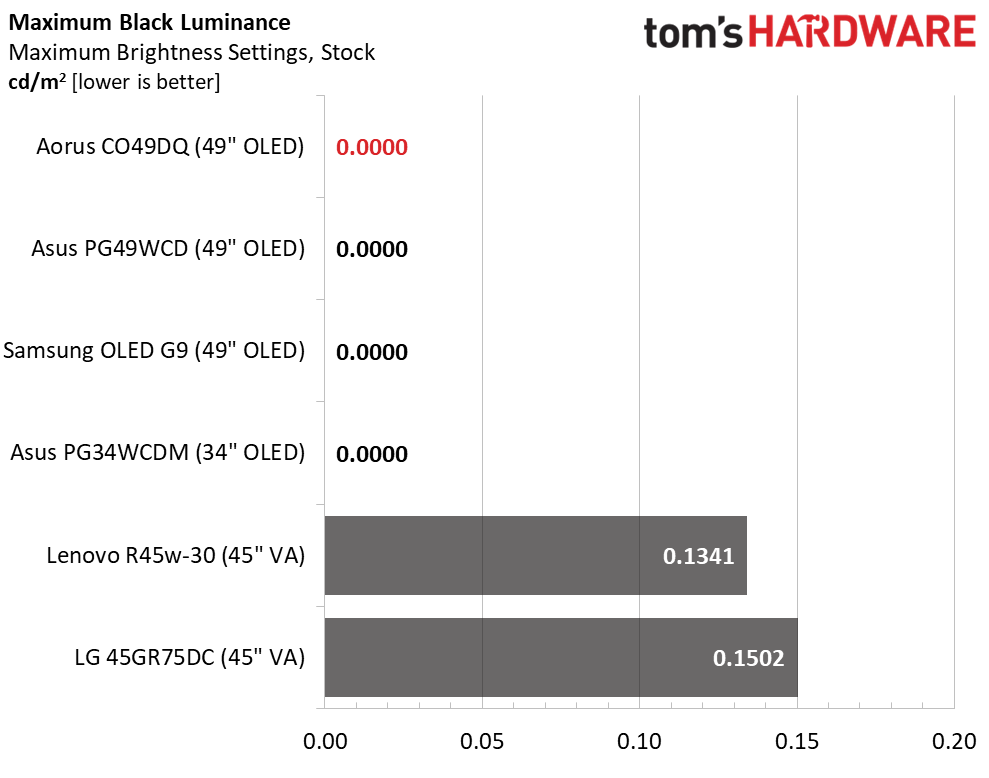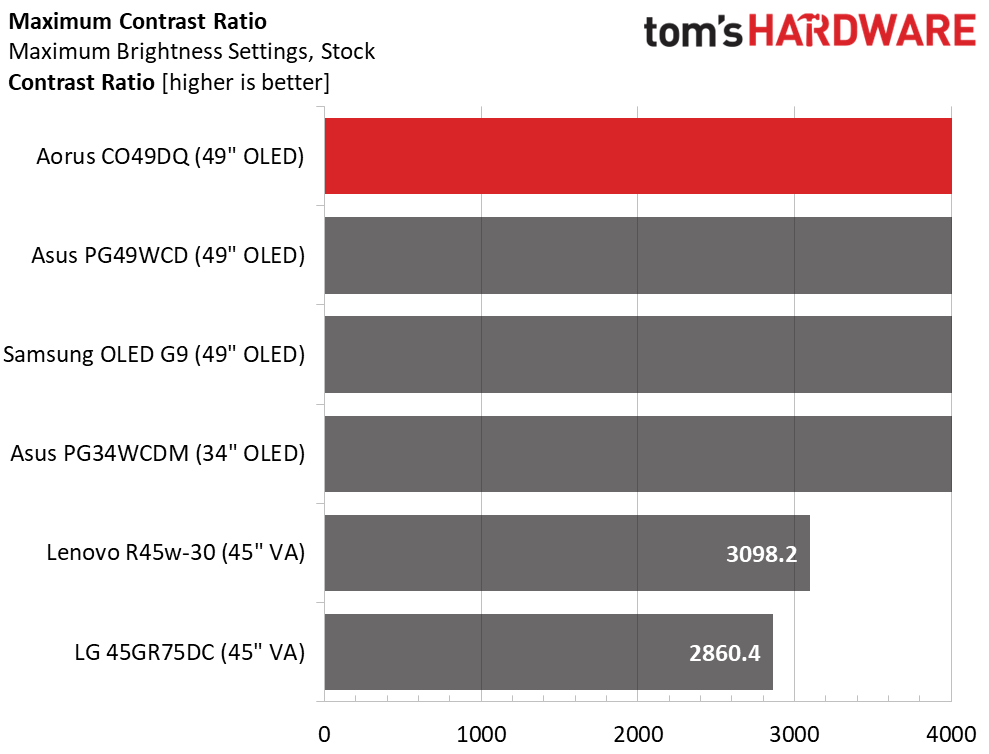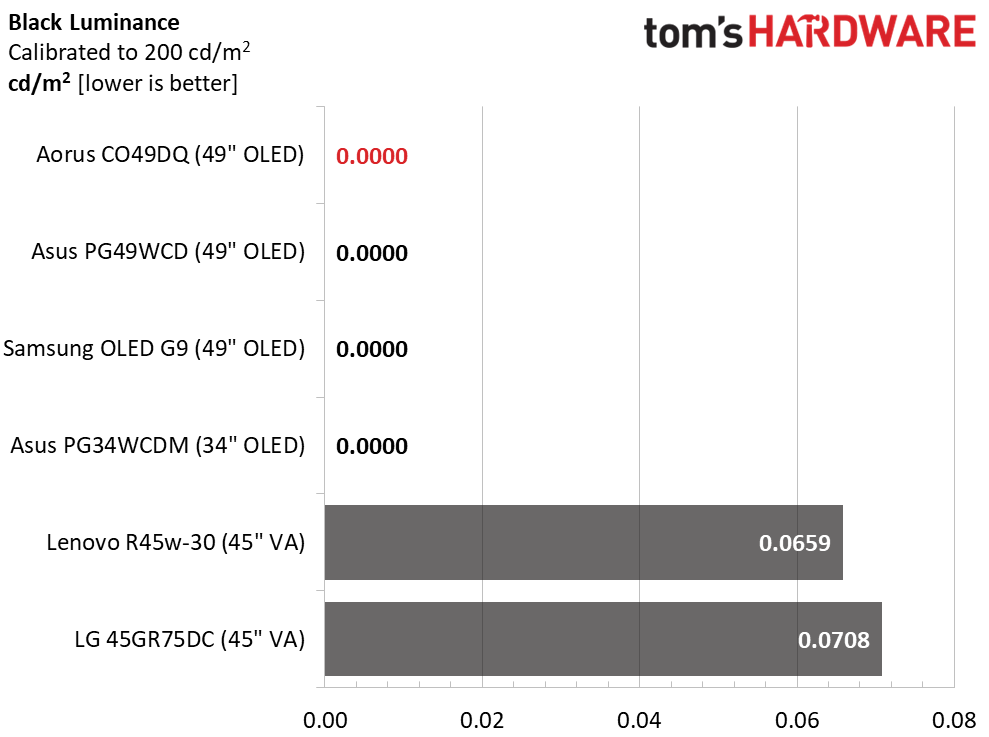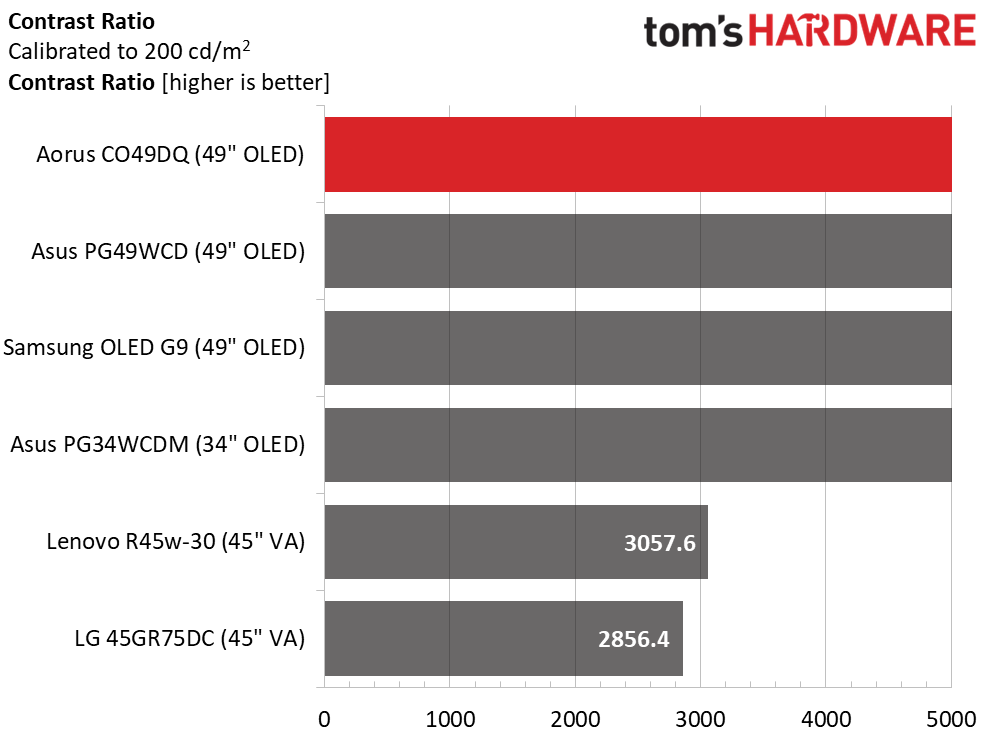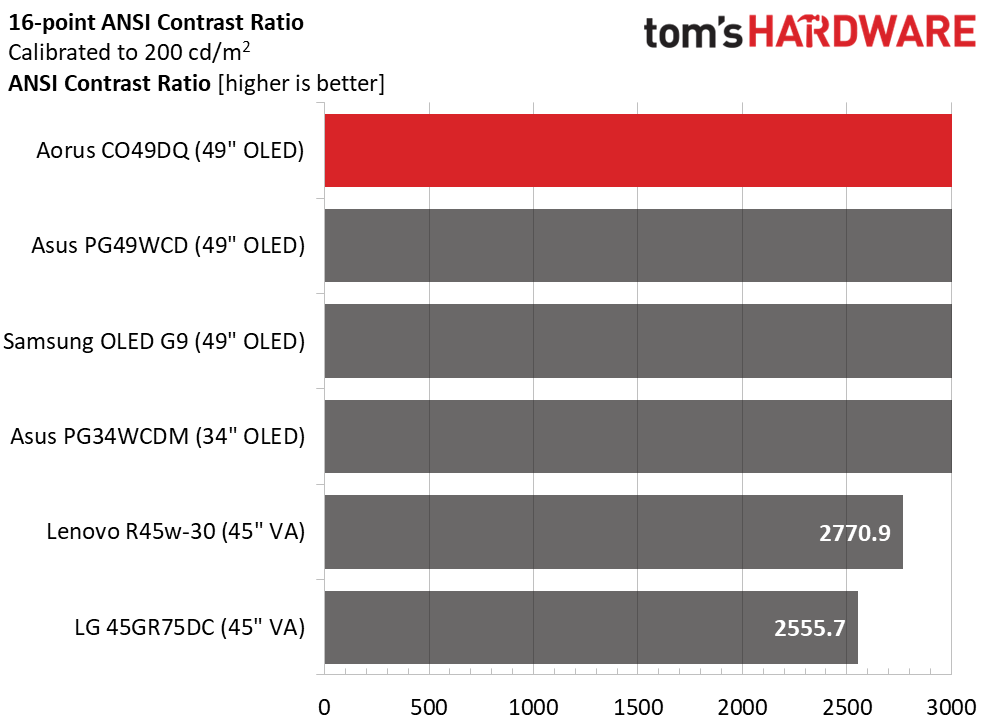Why you can trust Tom’s HardwareOur expert reviewers spend hours testing and comparing products and services so you can choose the best for you.Find out more about how we test.
Brightness and Contrast
To read about our monitor tests in-depth, please check outDisplay Testing Explained: How We Test PC Monitors.We cover brightness and contrast testing onpage two.
Uncalibrated – Maximum Backlight Level
OLED’s peak SDR brightness is usually determined by how much it varies with changes in content. Asus is the most aggressive, so it measures higher. But the CO49DQ is no slouch. 267 nits is more than bright enough for indoor use. I turned my sample down around 15%, and it was still plenty bright. You don’t need high levels for a stunning picture. The two VA panels are typical of their segment at 429 and 415 nits peak. OLED black levels remain unmeasurable, so contrast is also undetermined, i.e., infinite.
After Calibration to 200 nits
The two VA monitors score well for their class at around 3,000:1 contrast after calibration. The OLEDs are on another level. Once brightness is equalized between the OLED monitors, they are indistinguishable in terms of contrast and black levels. The only difference in picture quality comes with color gamut volume and accuracy, which I’ll discuss on the next page.
The ANSI contrast of OLED also can’t be measured, but the VA screens do reasonably well for their category.

Test Takeaway:I included the VA monitors here to bring the count to six. In the contrast contest, OLED versus LCD isn’t a fair fight. The good part is that the CO49DQ and all its competition deliver the same contrast performance. Differences in peak brightness are largely irrelevant once the screens are set to the same output level.
MORE:How to Choose the Best HDR Monitor
Current page:Brightness and Contrast
Christian Eberle is a Contributing Editor for Tom’s Hardware US. He’s a veteran reviewer of A/V equipment, specializing in monitors. Christian began his obsession with tech when he built his first PC in 1991, a 286 running DOS 3.0 at a blazing 12MHz. In 2006, he undertook training from the Imaging Science Foundation in video calibration and testing and thus started a passion for precise imaging that persists to this day. He is also a professional musician with a degree from the New England Conservatory as a classical bassoonist which he used to good effect as a performer with the West Point Army Band from 1987 to 2013. He enjoys watching movies and listening to high-end audio in his custom-built home theater and can be seen riding trails near his home on a race-ready ICE VTX recumbent trike. Christian enjoys the endless summer in Florida where he lives with his wife and Chihuahua and plays with orchestras around the state.
